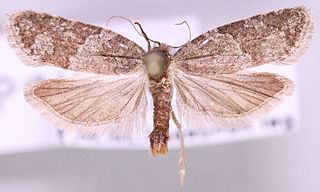
Trifolium campestre, commonly known as hop trefoil, field clover and low hop clover, is a species of flowering plant native to Europe and western Asia, growing in dry, sandy grassland habitats, fields, woodland margins, roadsides, wastelands and cultivated land. The species name campestre means "of the fields".

Medicago lupulina, commonly known as black medick, nonesuch, or hop clover, is a plant of dry grassland belonging to the legume or clover family. Plants of the genus Medicago, or bur clovers, are closely related to the true clovers (Trifolium) and sweet clover (Melilotus). Like the true clovers, black medick has three leaflets and a small, yellow flower closely resembling those of lesser trefoil. Black medick belongs to the same genus as alfalfa.

Trifolium dubium, the lesser trefoil, suckling clover, little hop clover or lesser hop trefoil, is a flowering plant in the pea and clover family Fabaceae. This species is generally accepted as the primary plant to represent the traditional Irish shamrock.

Medicago polymorpha is a plant species of the genus Medicago. It is native to the Mediterranean basin but is found throughout the world. It forms a symbiotic relationship with the bacterium Sinorhizobium medicae, which is capable of nitrogen fixation. Common names include California burclover, toothed bur clover, toothed medick and burr medic.

Medicago arborea is a flowering plant species in the pea and bean family Fabaceae. Common names include moon trefoil, shrub medick, alfalfa arborea, and tree medick. It is found throughout Europe and especially in the Mediterranean basin, primarily on rocky shores among shrubby vegetation. It forms a symbiotic relationship with the bacterium Sinorhizobium meliloti, which is capable of nitrogen fixation. It is the only member of the genus Medicago which is used as an ornamental. M. arborea is sometimes misidentified as Cytisus, which it resembles.

Stigmella sorbi is a moth of the family Nepticulidae. It is found in most of Europe, east to the eastern part of the Palearctic realm.
Trifurcula ridiculosa is a moth of the family Nepticulidae. It is only known from the Canary Islands: Tenerife, La Palma, La Gomera, El Hierro and Madeira, including Porto Santo island.

Trifurcula cryptella is a moth of the family Nepticulidae. It is widespread throughout Europe, northwards to southern parts of Norway and Sweden, eastwards to Poland and the Balkan Peninsula, and south to the Mediterranean countries, but there it is rare and confined to mountainous regions. In Italy it has only been recorded from the northern part, in Portugal in the Serra da Estrêla, in Spain in the Cantabrian Mountains and possibly the Sierra Nevada. It is absent from the Mediterranean islands.
Trifurcula eurema is a moth of the family Nepticulidae. It is widespread throughout Europe, northwards to southern Norway and Sweden, Poland and the Baltic Region. It is also found in the Mediterranean region, including the larger Mediterranean islands, east to Bulgaria, Asiatic Turkey and Ukraine.

Leucoptera laburnella is a moth in the family Lyonetiidae. It is found in most of Europe, except the European part of Russia and the southern part of the Balkan Peninsula. It is also found in North America.
Phyllonorycter insignitella is a moth of the family Gracillariidae. It is found in all of Europe, except the Balkan Peninsula.
Phyllonorycter medicaginella is a moth of the family Gracillariidae. It is found from Denmark and Poland to Belgium, the Alps, Bulgaria and Ukraine.

Phyllonorycter nigrescentella is a moth of the family Gracillariidae. It is known from all of Europe except the Balkan Peninsula.

Phyllonorycter staintoniella is a moth of the family Gracillariidae. It is found from Sweden to the Pyrenees, Sardinia, Italy and Bulgaria and from Great Britain to Poland and Romania.

Micrurapteryx kollariella is a moth of the family Gracillariidae. It is known from all of Europe, except the British Islands and Fennoscandia.
Caloptilia flava is a moth of the family Gracillariidae. It is known from southern Russia and Rhodes.

Aproaerema anthyllidella is a moth of the family Gelechiidae. It is found in most of Europe, Kyrgyzstan, Iran and North America.

Syncopacma taeniolella is a moth of the family Gelechiidae. It is found in most of Europe.

Cnephasia pasiuana, the meadow shade, is a moth of the family Tortricidae. It was described by Jacob Hübner in 1799. It is found in almost all of Europe. The habitat consists of rough pastures, fens and marshy areas.

Micrurapteryx caraganella is a moth of the family Gracillariidae. It is found in Siberia, and possibly Tajikistan and the Russian Far East.












